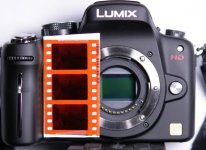Brian@202020
New member
B&H has a nice chart for stills cameras on their site to show the relative focal length needed on various stills cameras to achieve certain fields of view. But it's not very adaptable to the AF100 or cinema cameras.
Here I've put together a chart that shows the sensor sizes of common video and film formats, their Cinema Crop Factor as related to Academy Aperture 35mm Cinema Film frame size, and normalized for 16:9 image shape. It's not all that easy to put together a field of view chart when comparing different aspect ratios, so I normalized all the sensors for their widest 16:9-shaped field of view.
Without further adieu...
View attachment 25235
I want one with all the RED ONE (4.5K, 4K, 3K, 2K) 16x9 sizes added as well as 1/4, 1/3, and 1/2 16x9 sizes. Also the exact 7D/t2i/60D, 1D, 5D, and Sony NEX 16x9 sizes would be nice, hell maybe the Nikon 16x9 sizes too. I might just make one. I'm a junky for numbers. Loved math class as a kid


